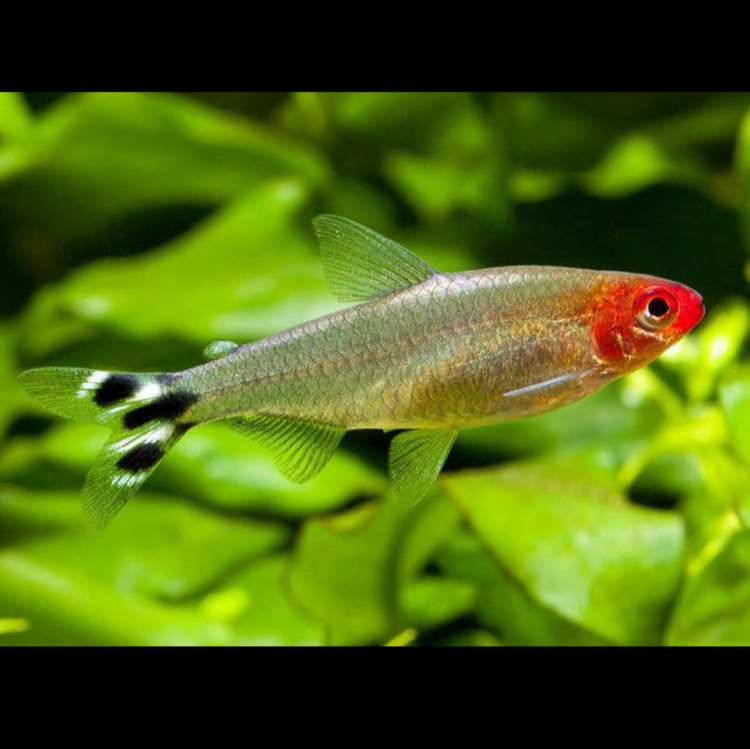
Rummy-nose Tetra
Out of stock
Email when stock available
Rummy-nose Tetra
The rummy-nose tetra is a long-time favorite in the hobby because of its unique colors and tight schooling behavior. This outgoing fish gets its common name comes from the reddish flush on its face, and there’s nothing like seeing a large group of gorgeous redheads darting back and forth amidst an emerald forest of live aquarium plants. Learn more about this dazzling tetra and how to best bring out its crimson colors.
These 2-inch (5 cm) South American characids have a torpedo-shaped profile typical of tetras. While the body is shiny and silvery, the snout is red-orange and the tail has horizontal, white and black striping. Other color variants, such as albino and golden types, are also available. The three main species that are commonly sold as rummy-nose tetras include:
- Hemigrammus rhodostomus (true rummy-nose tetra): standard red nose and striped tail
- Hemigrammus bleheri (firehead or brilliant rummy-nose tetra): more redness on the head that goes past the gill plate and sometimes has a tapered, diamond shape
- Petitella georgiae (false rummy-nose tetra): the middle black stripe on the tail extends onto the back half of the body and looks like a short, horizontal line
Besides their striking appearance, they are known for three interesting characteristics. First off, they tightly school together and change directions like a giant flock of birds. This behavior is useful for confusing predators, who will have a tougher time pinning down an individual tetra that is surrounded by a swarm of doppelgangers. Secondly, they can live in higher-than-normal temperatures in the low to mid 80s°F and therefore are often paired with other warmer water fish like discus, German blue rams, and Sterbai corydoras. Finally, they often get called the “canary in the coal mine” of aquariums because their noses lose their color when stressed. This visible indicator can help warn you of bad water quality, low temperatures, disease, bullying, or other problems in the aquarium. This happiness gauge is great for both beginners and veterans because you can instantly tell at a glance when things are going well or not.
Are rummy-nose tetras hardy? Because of their sensitivity to sources of stress, many people do not recommend them for new fishkeepers. In our experience, they are adaptable to a wide range of parameters and can be kept by beginners.
What Do Rummy Nose Tetras Eat?
These omnivores are so fun to feed because they’ll swim all over the tank to chase down almost any community fish food you drop in the tank. Ideally, you want to feed smaller foods that can fit in their small mouths, such as baby brine shrimp, nano pellets, and daphnia. To bring out their rosy blush, offer fish foods that contain naturally color-enhancing ingredients, like the krill in Xtreme Krill Flakes and salmon in Easy Fry and Small Fish Food. The key is to provide a variety of different options to avoid potential nutrient deficiencies in their diet.
Source : Aquarium Co-Op
Only logged in customers who have purchased this product may leave a review.
Related products
-
- 0 reviews
-
- 0 reviews
-
- 0 reviews
-
- 0 reviews
-
- 0 reviews
-
- 1 review
-
- 0 reviews
-
- 0 reviews
-
- 0 reviews
-
- 0 reviews
-
- 1 review
Latest products
-
- 0 reviews
-
- 0 reviews
-
- 0 reviews
-
- 0 reviews
-
- 0 reviews
-
- 0 reviews
-
- 0 reviews
-
- 0 reviews
-
- 0 reviews
-
- 0 reviews
-
- 0 reviews
-
- 0 reviews






























Reviews
There are no reviews yet.